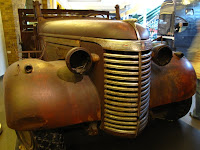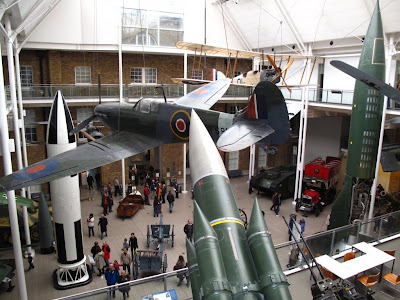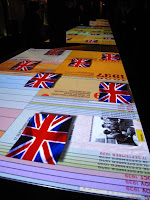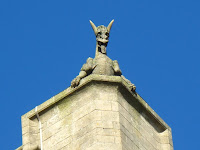
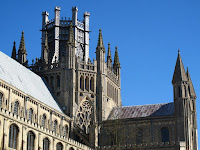
The whole of England was promised beautiful sunshine today, so we decided to do a circular driving tour passing through Ely, which is north of Cambridge. Dominating the town is the magnificent cathedral. Originally built on an island in the low lying swampy fens, it now appears to rise above the flat landscape of drained fields.

We enjoyed looking around the town, now adjacent to the River Great Ouse, then arrived at the cathedral to take in the service in the stunning surroundings. Being Sunday, admission to the cathedral was free, but we paid for a tour of the octagonal tower, This was very worthwhile, and gave us a different appreciation of the building.

From part way up the tower, we were able to get a birds eye view of the nave below. The tour highlight was a walk on the roof around the outside of the octagonal lantern. The views were amazing, especially on such a lovely day. We could see for miles, and the guide pointed out features 15 - 20 miles away.

The driving tour then took us through Soham, the town which featured a lot in the news a few years ago with the tragic murder of two schoolgirls. This seemed so out of character as it appeared such a quiet spot.
Then on to Swaffhams Prior past the Devil's Dyke. The ditch is an amazing medieval fortification which stretches for seven miles. The ditch is about 11m deep here, from the bottom of the ditch to the top of the bank.

The small village of Swaffhams Prior is equally interesting. Although quite small, it has two windmills at one end of the village and two churches within the same churchyard at the other end. Apparently the boundary for two parishes was between the two churches, and it took an act of parliament in 1667, to join the two parishes.

Our final stop was just down the road at a favourite winter garden – Angelsey Abbey. The winter garden must have suffered from the extreme weather this winter, as it didn't look as good as we have seen it other years. But the beautiful snowdrops in their woodland walk were a wonderful reminder that spring is nearly here.
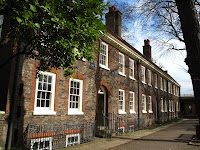 One of the truly delightful types of buildings in England are almshouses. Generally built by a wealthy benefactor for the elderly poor of the parish, almshouses are all different, yet have a distinctive look.
One of the truly delightful types of buildings in England are almshouses. Generally built by a wealthy benefactor for the elderly poor of the parish, almshouses are all different, yet have a distinctive look.  This morning we visited an almshouse complex built in 1714, which is now a museum of middle class homes since the 17th century. Originally called the 'middling sort', the middle class was a new concept, of increasingly prosperous professional people. The Geffrye Museum is an interestingly different type of museum.
This morning we visited an almshouse complex built in 1714, which is now a museum of middle class homes since the 17th century. Originally called the 'middling sort', the middle class was a new concept, of increasingly prosperous professional people. The Geffrye Museum is an interestingly different type of museum. From here, we did a walk through Islington to Holloway. Islington used to a dairying area, supplying the capital with its fresh milk, but looks rather different today. Just off the High Street is Camden Passage, a fascinating area of antique shops and cafes.
From here, we did a walk through Islington to Holloway. Islington used to a dairying area, supplying the capital with its fresh milk, but looks rather different today. Just off the High Street is Camden Passage, a fascinating area of antique shops and cafes.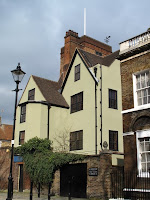 The New River was a channel completed in 1613 to bring fresh water to the city, but in the 19th century the river was piped underground, and the next part of our walk followed the course of the 'river', now made into pleasant gardens. We left the gardens near Cannonbury Tower, owned in the 16th century by a wealthy, but mean, cloth merchant whose daughter eloped with Lord Compton after being lowered from an upper floor window in a bread basket.
The New River was a channel completed in 1613 to bring fresh water to the city, but in the 19th century the river was piped underground, and the next part of our walk followed the course of the 'river', now made into pleasant gardens. We left the gardens near Cannonbury Tower, owned in the 16th century by a wealthy, but mean, cloth merchant whose daughter eloped with Lord Compton after being lowered from an upper floor window in a bread basket. We finished our walk just beyond a modern-day landmark, the Emirates Stadium, home of the Arsenal Football Club.
We finished our walk just beyond a modern-day landmark, the Emirates Stadium, home of the Arsenal Football Club.














